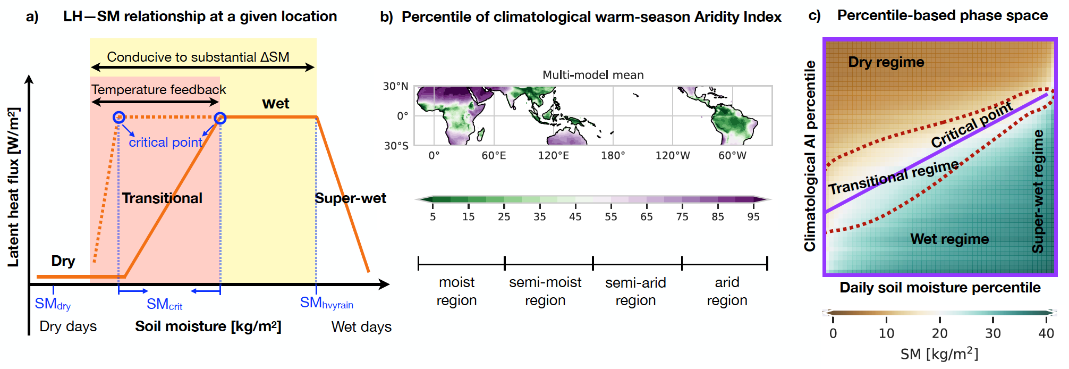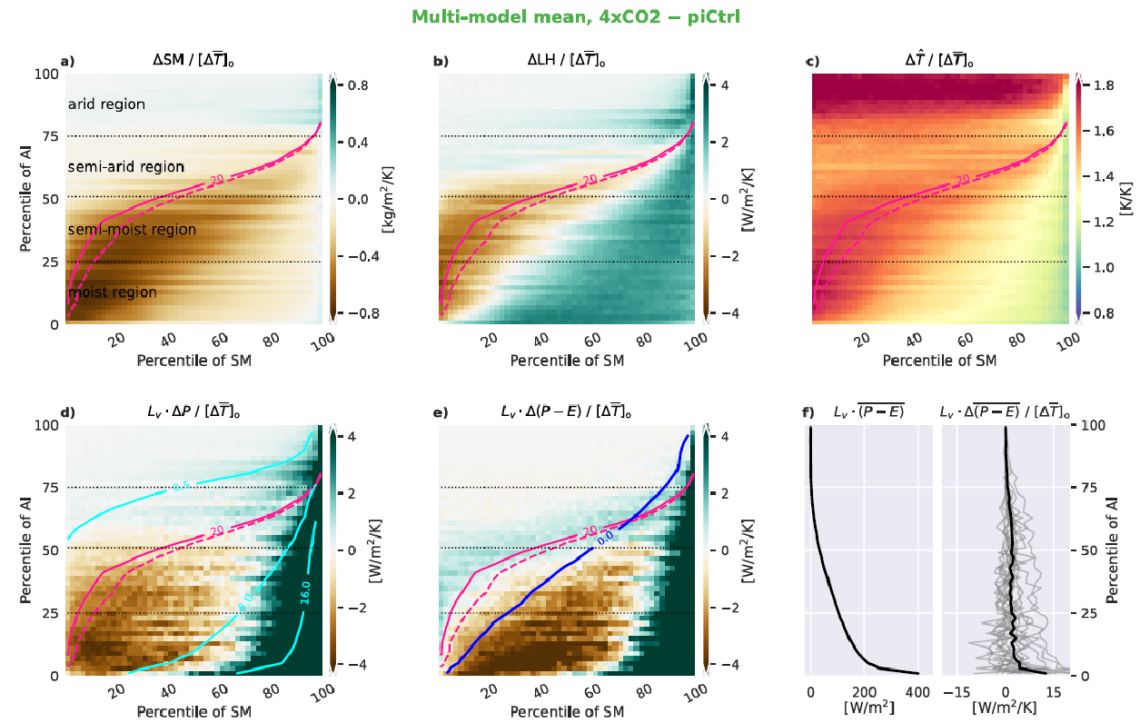September 5th, 2023
Key Findings
- To investigate future temperature extremes and connections with the hydrological cycle over land, the authors introduce a process-based method which organizes the spatial complexity by climatological aridity, and organizes the temporal complexity by daily soil moisture.
- By showing data in a behavioral phase space (rather than in a map view), patterns become apparent which reveal physical mechanisms connecting soil moisture, latent heat flux (evaporation from soils and open water, along with transpiration from plants), and temperature extremes.
- A consistent average critical soil moisture value is found in the models; below this value, moisture limitation exacerbates temperature extremes.
- This compact new display highlights the repartitioning of rainfall toward fewer, stronger events in the future.
- The process-oriented regimes revealed by this analysis help explain how land deviates from the ocean-based “wet-get wetter/dry-get-drier” paradigm.
Suqin Q. Duan, Kirsten L. Findell, and Stephan A. Fueglistaler. Geophysical Research Letters. DOI: 10.1029/2022GL102285
Accurate predictions of future changes in hydroclimate over land, in particular the magnitude and frequency of extreme heat, extreme rainfall, and droughts are of paramount importance for society. Gaps in our process-level understanding of land-atmosphere interactions remain, in particular with respect to the connection between changes in different types of extremes, and the connection between changes in local land-atmosphere interactions with the global-scale response of the hydrological cycle to climate forcings. The authors introduce a novel method that preserves the mechanistic local, daily-mean time scale understanding while substantially reducing the dimensionality of the global, time-varying problem in order to provide an integrated, big-picture perspective.
Predictions of hydroclimate changes (temperature, precipitation, evaporation, etc.) over land in a warming world rely largely on model simulations with often diverging results when presented in map view. The authors’ process-based method organizes the spatial complexity by climatological aridity, and organizes the temporal complexity by daily soil moisture (SM). This allows for the analysis of model predictions in a comprehensive yet compact display which clearly reveals the connections between variables and the mechanisms responsible for changes. Key results include the impact of SM limitation on elevated temperature extremes and the trend toward fewer but stronger rainfall events.
This compact display is an efficient new tool for intercomparisons between models. The remarkably clean results suggest quantitative theoretical advances are possible despite the complexity of the system. Improved understanding of the drivers of extreme temperatures will help shed light on future temperature extremes, and connections with the hydrological cycle over land.




